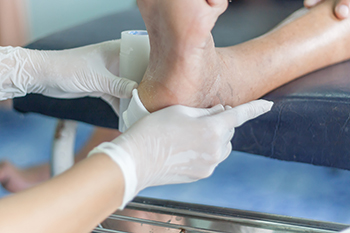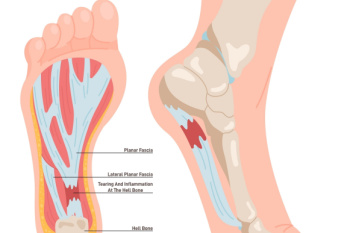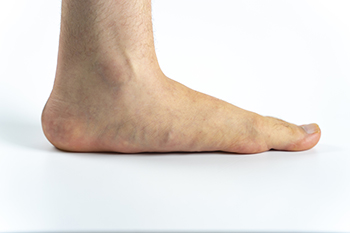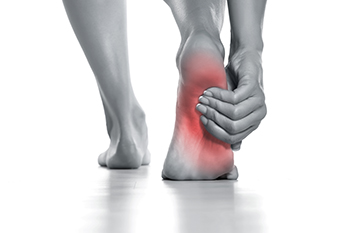Connect With Us
Blog
Items filtered by date: June 2025
Prioritizing Foot Wound Care for Better Health and Mobility

Proper wound care on the feet is essential for preventing infections, promoting healing, and maintaining overall foot health. This is especially important for individuals with diabetes or circulation issues. Simple daily habits can make a big difference, such as checking the feet for red spots, blisters, or cuts, wearing properly fitting shoes, and performing regular foot inspections. Engaging in physical activity helps to increase circulation and supports tissue repair. A podiatrist can provide expert guidance on wound management, recommend appropriate footwear, and treat any existing foot conditions that may slow healing. If you notice any unusual changes or slow-healing wounds on your feet, it is strongly suggested that you consult a podiatrist for personalized care and support.
Wound care is an important part in dealing with diabetes. If you have diabetes and a foot wound or would like more information about wound care for diabetics, consult with Alice Kim, DPM from 101 Foot and Ankle. Our doctor will assess your condition and provide you with quality foot and ankle treatment.
What Is Wound Care?
Wound care is the practice of taking proper care of a wound. This can range from the smallest to the largest of wounds. While everyone can benefit from proper wound care, it is much more important for diabetics. Diabetics often suffer from poor blood circulation which causes wounds to heal much slower than they would in a non-diabetic.
What Is the Importance of Wound Care?
While it may not seem apparent with small ulcers on the foot, for diabetics, any size ulcer can become infected. Diabetics often also suffer from neuropathy, or nerve loss. This means they might not even feel when they have an ulcer on their foot. If the wound becomes severely infected, amputation may be necessary. Therefore, it is of the upmost importance to properly care for any and all foot wounds.
How to Care for Wounds
The best way to care for foot wounds is to prevent them. For diabetics, this means daily inspections of the feet for any signs of abnormalities or ulcers. It is also recommended to see a podiatrist several times a year for a foot inspection. If you do have an ulcer, run the wound under water to clear dirt from the wound; then apply antibiotic ointment to the wound and cover with a bandage. Bandages should be changed daily and keeping pressure off the wound is smart. It is advised to see a podiatrist, who can keep an eye on it.
If you have any questions, please feel free to contact our office located in Camarillo, CA . We offer the newest diagnostic and treatment technologies for all your foot care needs.
Plantar Fasciitis Facts

Plantar fasciitis is a common condition that involves inflammation of the plantar fascia, a thick band of tissue that runs along the bottom of the foot. It often causes heel pain, especially with the first steps in the morning. Risk factors include prolonged standing, obesity, wearing improper footwear, and high impact activities. Symptoms typically involve sharp heel pain and localized tenderness along the arch. Diagnosis may include a physical exam to identify pain points and assess foot mechanics. A podiatrist can confirm the condition, recommend stretching exercises, prescribe custom orthotics, and guide treatment to relieve discomfort. If you are experiencing persistent heel pain, it is suggested that you consult a podiatrist for a personalized plan to help restore foot function and comfort.
Plantar fasciitis is a common foot condition that is often caused by a strain injury. If you are experiencing heel pain or symptoms of plantar fasciitis, contact Alice Kim, DPM from 101 Foot and Ankle. Our doctor can provide the care you need to keep you pain-free and on your feet.
What Is Plantar Fasciitis?
Plantar fasciitis is one of the most common causes of heel pain. The plantar fascia is a ligament that connects your heel to the front of your foot. When this ligament becomes inflamed, plantar fasciitis is the result. If you have plantar fasciitis you will have a stabbing pain that usually occurs with your first steps in the morning. As the day progresses and you walk around more, this pain will start to disappear, but it will return after long periods of standing or sitting.
What Causes Plantar Fasciitis?
- Excessive running
- Having high arches in your feet
- Other foot issues such as flat feet
- Pregnancy (due to the sudden weight gain)
- Being on your feet very often
There are some risk factors that may make you more likely to develop plantar fasciitis compared to others. The condition most commonly affects adults between the ages of 40 and 60. It also tends to affect people who are obese because the extra pounds result in extra stress being placed on the plantar fascia.
Prevention
- Take good care of your feet – Wear shoes that have good arch support and heel cushioning.
- Maintain a healthy weight
- If you are a runner, alternate running with other sports that won’t cause heel pain
There are a variety of treatment options available for plantar fasciitis along with the pain that accompanies it. Additionally, physical therapy is a very important component in the treatment process. It is important that you meet with your podiatrist to determine which treatment option is best for you.
If you have any questions, please feel free to contact our office located in Camarillo, CA . We offer the newest diagnostic and treatment technologies for all your foot care needs.
Reminder: When Was the Last Time...?
Facts About Flat Feet

Flat feet, also known as pes planus, occur when the arches of the feet are low or absent, causing the entire sole to touch the ground. This condition may be present from childhood or develop over time due to injury, aging, or medical conditions that affect the tendons and ligaments. Flat feet can lead to discomfort, swelling, fatigue in the feet and legs, and problems with walking or standing for long periods. Poor alignment may also contribute to knee, hip, or lower back pain. A podiatrist can assess your foot structure, gait, and symptoms. Treatment options include supportive footwear, custom orthotics, exercises, or further medical care to help relieve pain and improve foot function. If you have flat feet and are experiencing chronic discomfort or acute pain, it is suggested that you contact a podiatrist who can offer you effective relief and management tips.
Flatfoot is a condition many people suffer from. If you have flat feet, contact Alice Kim, DPM from 101 Foot and Ankle. Our doctor will treat your foot and ankle needs.
What Are Flat Feet?
Flatfoot is a condition in which the arch of the foot is depressed and the sole of the foot is almost completely in contact with the ground. About 20-30% of the population generally has flat feet because their arches never formed during growth.
Conditions & Problems:
Having flat feet makes it difficult to run or walk because of the stress placed on the ankles.
Alignment – The general alignment of your legs can be disrupted, because the ankles move inward which can cause major discomfort.
Knees – If you have complications with your knees, flat feet can be a contributor to arthritis in that area.
Symptoms
- Pain around the heel or arch area
- Trouble standing on the tip toe
- Swelling around the inside of the ankle
- Flat look to one or both feet
- Having your shoes feel uneven when worn
Treatment
If you are experiencing pain and stress on the foot you may weaken the posterior tibial tendon, which runs around the inside of the ankle.
If you have any questions please feel free to contact our office located in Camarillo, CA . We offer the newest diagnostic and treatment technologies for all your foot and ankle needs.
Common Causes of Arch Pain

Foot arch pain can stem from several medical conditions that affect the muscles, ligaments, bones, and tendons in the foot. Plantar fasciitis is one of the most frequent causes, involving inflammation of the thick band of tissue that runs along the sole of the foot. Posterior tibial tendon dysfunction may also lead to arch pain due to gradual weakening of the tendon that supports the arch. The posterior tibial tendon runs along the inside of the ankle and attaches to bones in the arch, helping to maintain foot stability. Stress fractures in the long bones of the foot can develop from repetitive impact and are common among people who participate in high-impact activities. Other possible causes of arch pain include ligament sprains and structural abnormalities, such as high arches, which can place uneven pressure on the feet. Severe or prolonged arch pain may require medical imaging to confirm the diagnosis. A podiatrist can recommend effective treatment, including orthotics, medication, immobilization devices, or surgery, depending on the condition. If you are experiencing pain in the arch of your feet, it is suggested that you schedule an appointment with a podiatrist for a diagnosis and appropriate treatment.
Foot Pain
Foot pain can be extremely painful and debilitating. If you have a foot pain, consult with Alice Kim, DPM from 101 Foot and Ankle. Our doctor will assess your condition and provide you with quality foot and ankle treatment.
Causes
Foot pain is a very broad condition that could be caused by one or more ailments. The most common include:
- Bunions
- Hammertoes
- Plantar Fasciitis
- Bone Spurs
- Corns
- Tarsal Tunnel Syndrome
- Ingrown Toenails
- Arthritis (such as Gout, Rheumatoid, and Osteoarthritis)
- Flat Feet
- Injury (from stress fractures, broken toe, foot, ankle, Achilles tendon ruptures, and sprains)
- And more
Diagnosis
To figure out the cause of foot pain, podiatrists utilize several different methods. This can range from simple visual inspections and sensation tests to X-rays and MRI scans. Prior medical history, family medical history, and any recent physical traumatic events will all be taken into consideration for a proper diagnosis.
Treatment
Treatment depends upon the cause of the foot pain. Whether it is resting, staying off the foot, or having surgery; podiatrists have a number of treatment options available for foot pain.
If you have any questions, please feel free to contact our office located in Camarillo, CA . We offer the newest diagnostic and treatment technologies for all your foot care needs.

